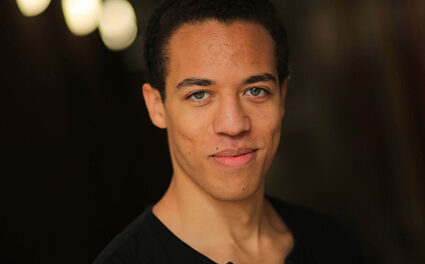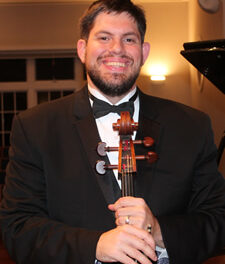Years from now we will be talking about this concert. The tone could easily be imagined as, “Were you there when Garrick Ohlsson Rached the house with two?”
Darko Butorac, conductor of the Asheville Symphony Orchestra, led the orchestra in their Masterworks 6 series (also the closer to the Asheville Amadeus Festival) in Thomas Wolfe Auditorium. Piano soloist Ohlsson led in a Rachmaninoff double feature: Rhapsody on a Theme of Paganini, Op. 43, and the Piano Concerto No. 2 in C minor, Op. 18. Mozart’s Symphony No. 25 in G minor (the “little” G minor), K.183, opened the program and was the festival tie-in. The stage had been rebuilt to jut 25 feet into the audience, placing the orchestra closer to the audience, with limited seating behind the musicians.
What does a legendary artist such as Ohlsson, at the pinnacle of his career, do, once he’s mastered all the Romantic war horses? Apparently, he plays more than one on the same concert. This stupendous feat of skill, strength, and grit was performed before a packed house that seemed to attract a more eclectic audience than the usual crowd of symphony-goers.
The Mozart symphony was a clever programming choice for a starter. Though a relatively early work from 1773, Mozart’s Sturm und Drang style (imitating Haydn’s serious style) is intensely emotional and dramatic, as if foreshadowing the Romantic works yet to come. The expanded four-movement format allowed the composer to write in the fullest range of vehicles: a driving, Molto agitato allegro peppered with syncopations, followed by an Andante with repeated short melodic phrases harmonized with dissonances. The third movement Menuetto has the character of driving seriousness (Alfred Einstein described it as “darkly fatalistic”), giving way to a sunny G Major trio sans strings (good wind playing here), and ending once again with the da capo return to G minor. The Finale, a rondo which bears thematic links to both the Menuetto and the opening theme of the first movement, was boldly declamatory and a satisfying closer to this little gem of a symphony.
Next came the Rhapsody on a Theme of Paganini. Though composed in 1934 (and premiered with the composer as soloist), the work harkens back to late 19th-century style. As a celebration of Paganini, one of the world’s greatest violin virtuosi, it can be enjoyed on two levels: as a scintillating variation set on the last of Paganini’s 24 caprices for solo violin and as a programmatic portrait of Paganini’s own life, personality, and legend. Paganini is personified by his own theme, while the use of the Dies irae melody in several variations references the legend about Paganini, who, according to Rachmaninoff, “for perfection in his art and for a woman, sold his soul to an evil spirit.” After several dialogues of the two themes, Paganini emerges as the victor in Variation 19. Ohlsson was the consummate soloist and collaborator, physically commanding with his large stature but ironically never calling undo attention to himself. He is a master stylist who played with deep feeling and grace and was always deftly synchronized with the orchestra. The apparent ease with which he played, no matter what he was playing, was truly amazing. The audience loved it and gave a deafening ovation at its conclusion.
After intermission, Ohlsson reemerged for the Piano Concerto No. 2, in C minor, completed in 1901 and premiered with the composer as soloist after a lengthy period of personal crisis. The piece was dedicated to Dr. Nikolai Dahl, a psychiatrist who worked with Rachmaninoff to conquer his depression-induced self-doubt about his worth as a composer. Though composed in the 20th century like the Rhapsody above, it, too, is a hallmark of 19th century Romanticism with its lush harmonies, sweeping melodies, and titanic virtuosic demands on the soloist. As in the concerti of Tchaikovsky, the pianist plays nearly constantly and frequently accompanies the orchestra.
Once seated at the piano, Ohlsson and the orchestra remained quiet for a prolonged period of time, inducing a hypnotic-like stillness in the hall. Then Ohlsson slowly raised his hands to the keyboard for the opening dramatic chords. What a performance! There were moments of high drama, chamber-music-like intimacy, expansive lyricism, percussive drama, and counterpoint executed between soloist and orchestra with astonishing clarity. Again, Ohlsson calibrated his playing beautifully and, in the absence of excess gesturing, allowed us to focus on the music itself, never showing any signs of fatigue.
Once again, the audience yelped and hooted its appreciation. In return, he encored with Chopin’s Waltz in C-sharp minor. This is a very familiar piece, of course, but it was transformed under his hands into a showstopper, full of nuance (nothing ever played the same way twice) and pathos. Thank you, Garrick Ohlsson, Maestro Butorac, and the Asheville Symphony for such a memorable performance!












